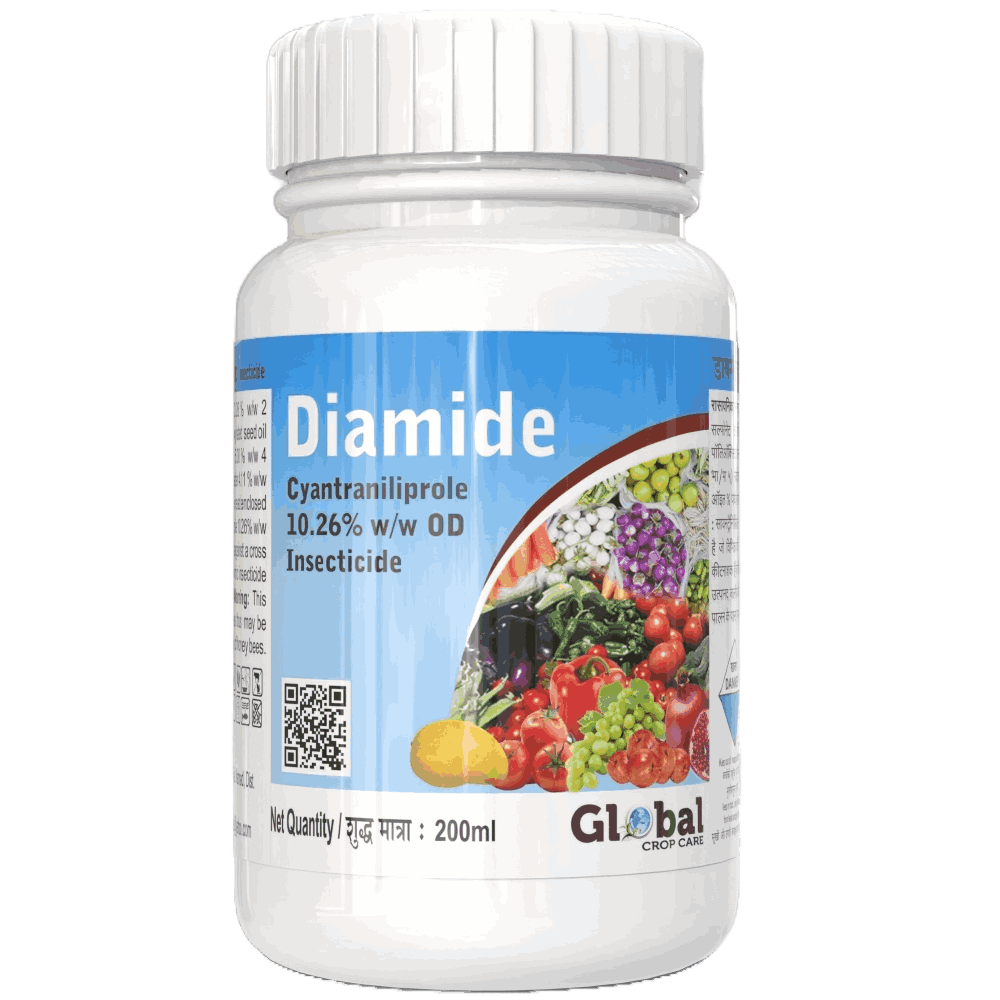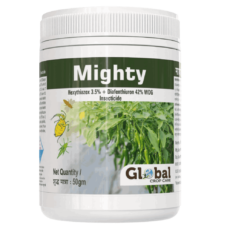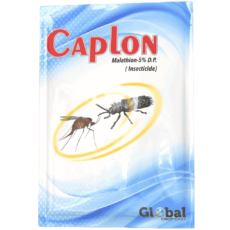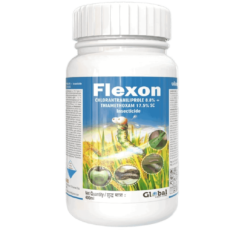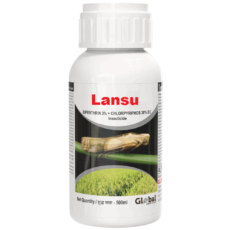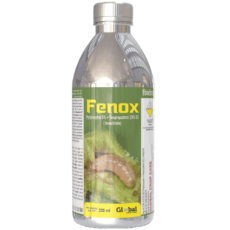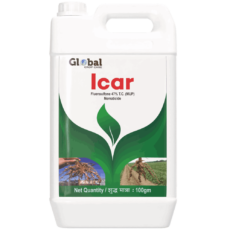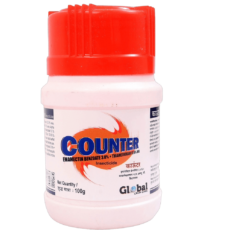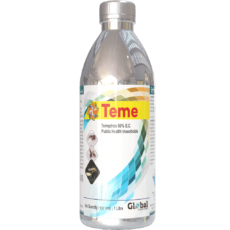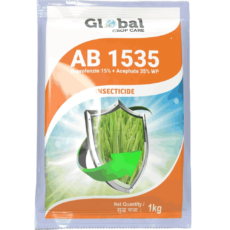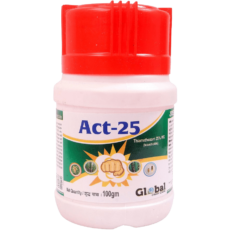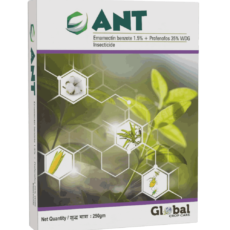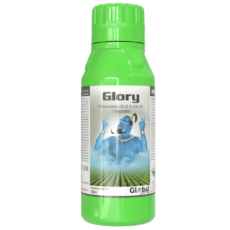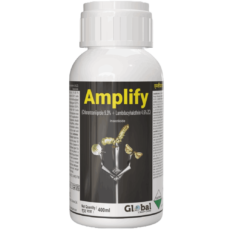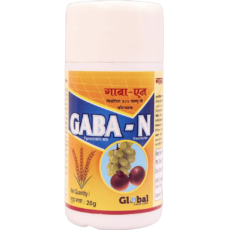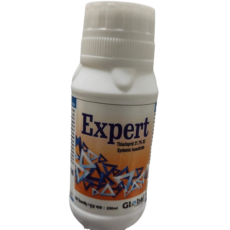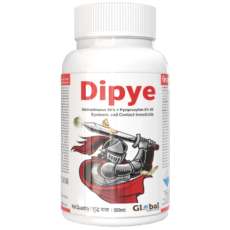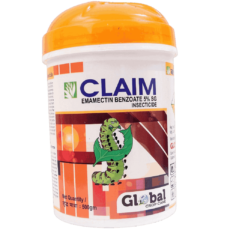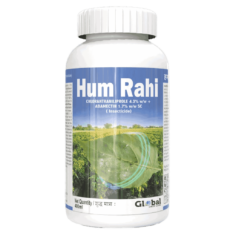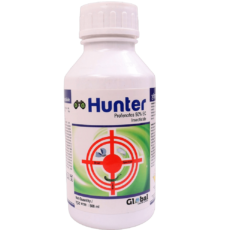Description
Recommendations:
| Crop(s) | Common Name of Pest | Dosage/HA | Dilution in Water (lts) | Waiting Period (days) | |
| AI (gms) | Formulation (gms) | ||||
| Bittergourd | Thrips-thrips palmi white fly-bemisia tabaci aphids-aphis gossypii pumpkin caterpillar-diaphania indica leaf miner-liriomyza trifolii | 90 | 900 | 500 | 5 |
| Brinjal | Whitefly-bemisia tabaci shoot and fruit borer-leucinodes orbonalis aphids-aphis gossypii thrips-thrips tabaci | 90 | 900 | 500 | 3 |
| Cabbage | Cabbage Aphid – Brevicoryne Brassicae Mustard Aphid – Lipaphis erysimi Diamond back moth – Plutella xylostella Tobacco carepillar – Spodoptera litura | 60 | 600 | 500 | 5 |
| Chilli | Thrips- Scirtothrips dorsalis Fruit borer- Helicovepra armigera Tobacco caterpillar- Spodoptera litura | 60 | 600 | 500 | 3 |
| Cotton | Whitefly-bemisia tabaci aphids-aphis gossypii thrips-thrips-thrips tabaci tobacco caterpillar-spodoptera litura bollworms-helicoverpa armigera & earias vitella | 90 | 900 | 500 | 7 |
| Gherkins | Leaf miner – Liriomyza trifolii Red pumpkin beetle – Aulacophora foveicolis Aphids – aphis gossypii Thrips – Thrips palmi While fly – Bemesia tabaci Pumpkin caterpillar – Diaphania indica Fruit fly – Bactrocera cucurbitae | 90 | 900 | 500 | 5 |
| Grapes | Thrips-scirtothrips dorsalis Flea beetle- Scelodonta strigicollis | 70 | 700 | 1000 | 5 |
| Okra | Whitefly-bemisia tabaci aphid-aphis gossypii shoot & fruit borer – earias vitella tobacco caterpillar- spodoptera litura fruit borer – helicoverpa armigera | 90 | 900 | 500 | 3 |
| Pomegranate | Thrips-scirtothrips dorsalis Pomegranate butterfly – Deudorix Isocrates | 75(0.0075%) | 750(0.075%) | 1000 | 5 |
| Whitefly-Siphoninus phillyreae Aphids- Aphis punicae | 90(0.009%) | 900(0.09%) | 1000 | 5 | |
| Ridgegourd | Thrips-thrips palmi white fly – bemisia tabaci aphids-aphis gossypii pumpkin caterpillar-diaphania indica leaf miner-liriomyza trifolii | 90 | 900 | 500 | 5 |
| Thrips-thrips palmi white fly – bemisia tabaci aphids-aphis gossypii pumpkin caterpillar-diaphania indica leaf miner-liriomyza trifolii | 90 | 900 | 500 | 5 | |
| Tomato | Leaf miner- Liriomyza trifolii Aphids – Aphis gossypii Thrips – Thrips tabaci While fly – Bemesia tabaci Fruit borer- Helicovepra armigera | 90 | 900 | 500 | 3 |
| Watermelon | Thrips-thrips palmi white fly-bemisia tabaci aphids-aphis gossypii leaf miner-liriomyza trifolii | 90 | 900 | 500 | 5 |
Diamide (Cyantraniliprole 10.26% OD) is a novel anthranilic diamide insecticide effective against a cross spectrum of chewing and sucking pests. It is a systemic insecticide which is effective through ingestion and contact Warning: This product is toxic to aquatic organisms and honeybees thus may be avoided near aquaculture and active period of foraging of honey bees.
Diamide, cyantraniliprole 10.26% w/w od is a novel anthranilic diamide insecticide effective against a cross spectrum of chewing and sucking pest in grapes, pomegranate, cabbage, chilli, tomato, gherkins, okra, brinjal, cotton, bittergourd, ridgegourd and watermelon.
Diamide Insecticide is an anthranilic diamide insecticide in the form of an oil dispersion formulation designed for foliar spray. Diamide insecticide powered by Cyazypyr active exhibits cross-spectrum action on several sucking and chewing insects. An early application of Diamide in the crop life cycle helps the crop with a promising beginning and early crop establishment which paves the way for a superior yield and better crop quality.
- INSECTS/ DISEASES – Silverleaf Whitefly (Bemisia Tabaci) And Melon Aphid (Aphis Gossypii) As Well As Suppresses Green Peach Aphid (Myzus Persicae), Tomato Thrips (Frankliniella Schultzei) And Western Flower Thrips (Frankliniella Occidentalis). Cotton bollworm (Helicoverpa armigera), Native budworm (Helicoverpa punctigera), and Tomato leaf miner (Phthorimaea operculella) and Cucumber moth (Diaphania indica).
- MODE OF ACTION – Diamide insecticide enters larvae primarily by ingestion, but also by contact. Exposure to the pest species typically results in rapid feeding cessation within a few hours of exposure, however, the time to death may take 3 to 6 days, depending upon the species.
Antidote
No specific antidote is known, treat symptomatically

